Liquid Luxury: The World's Most Exceptional Premium Water Brands Redefining Hydration

The quest for exceptional hydration has transformed water from a basic necessity into a luxury experience. Premium water brands now compete on global stages, offering products sourced from pristine locations around the world—from glacial meltwater in Scandinavia to artesian wells in the Pacific Islands.
These elite water brands distinguish themselves through unique mineral compositions, sophisticated packaging, and compelling origin stories. Some boast naturally alkaline properties, while others claim centuries-old filtering processes through volcanic rock. What was once simply H2O has evolved into a status symbol, with bottles appearing in high-end restaurants, exclusive hotels, and celebrity Instagram posts.
What Makes Water Premium?
Premium water distinguishes itself through sophisticated quality markers that extend beyond standard purification. These elevated attributes combine scientific excellence with carefully selected origins to create products that justify luxury pricing.
The Science of Water Purity
Premium water brands implement extensive purification techniques that exceed basic filtration methods. Multiple-stage filtration removes contaminants down to microscopic levels, often including reverse osmosis systems that force water through semi-permeable membranes to eliminate impurities as small as 0.0001 microns. Brands like Evian and Fiji utilize natural filtration through mineral-rich rock layers that both purify and enhance the water with beneficial minerals.
Advanced oxidation processes employed by premium brands like Voss break down organic compounds through controlled oxidation reactions. UV sterilization, another common method, destroys 99.99% of bacteria and viruses without chemical additives that might alter taste profiles.
The pH level of premium water typically ranges between 7.5-8.5, creating a slightly alkaline product that proponents claim offers health benefits. This contrasts with tap water, which commonly registers between 6.5-7.5 pH. Premium waters like Essentia specifically market their higher alkalinity (9.5+ pH) as a defining quality characteristic.
Mineral composition significantly influences taste and perceived quality in premium waters. Calcium (20-100 mg/L), magnesium (2-50 mg/L), and potassium (1-5 mg/L) contribute to distinctive flavor profiles. These mineral concentrations occur naturally in springs like San Pellegrino, which contains 174 mg/L calcium, or through deliberate enhancement in laboratory-perfected formulations like Smartwater.
TDS (Total Dissolved Solids) measurements quantify mineral content, with premium waters featuring carefully balanced profiles. Low-mineral waters like Voss (44 mg/L TDS) offer subtle, clean tastes, while high-mineral options like Gerolsteiner (2,500 mg/L TDS) provide robust mineral expressions.
Source Significance
Geographic origin creates fundamental value distinctions in premium water. Remote, pristine sources like Fiji Water's artesian aquifer in the Yaqara Valley establish authenticity through environmental isolation. These protected locations, far from industrial activity, minimize contamination risks and enhance brand storytelling.
Ancient water sources add historical prestige to premium offerings. Brands like 10 Thousand BC harvest glacial water from the British Columbia Coast Mountains, containing water deposited during the last ice age. This geological dating adds exclusivity through time-based scarcity and purity narratives.
Artesian and spring sources leverage natural pressure systems that force water through rock formations, creating natural filtration. Brands like Flow source from artesian wells where water rises naturally to the surface without mechanical pumping, maintaining its original mineral composition while minimizing human intervention.
Protected watersheds significantly enhance premium positioning. Norway's Voss Water sources from an aquifer beneath protected wilderness, safeguarded by strict environmental regulations. These protected ecosystems create marketing narratives around untouched purity while ensuring consistent quality through environmental conservation.
Volcanic filtration provides another premium distinction. Hawaii's Waiakea Water passes through 14,000 feet of volcanic rock, acquiring a unique mineral profile through natural enrichment. This volcanic filtration creates mineral signatures impossible to replicate artificially, establishing genuinely distinctive flavor profiles.
Small-batch harvesting practices, similar to craft spirits production, create artificial scarcity while ensuring quality control. Brands like ROI Water from Slovenia limit production to maintain standards and exclusive positioning, harvesting water according to specific moon phases and bottling in limited quantities that enhance perceived value.
Top Premium Still Water Brands
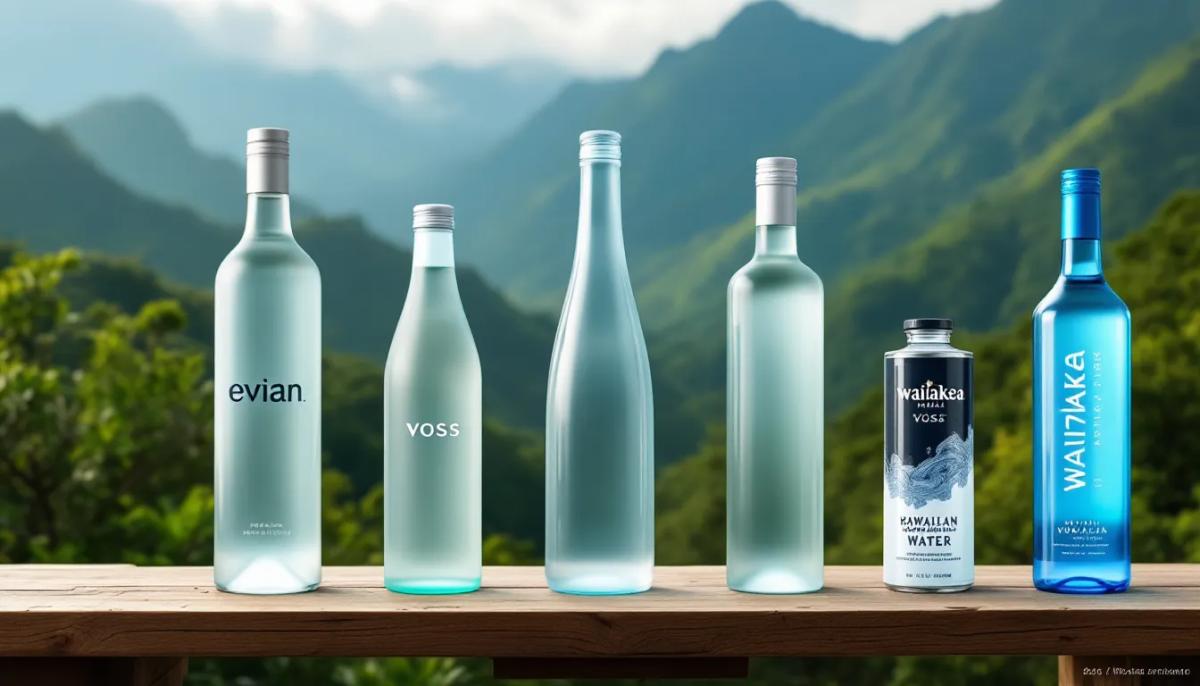
Premium still water brands represent the pinnacle of bottled water luxury, sourced from pristine locations and offering distinct mineral profiles that elevate the drinking experience. These brands combine exceptional purity with sustainable practices and sophisticated packaging to justify their premium positioning in the market.
European Luxury Waters
European luxury waters dominate the premium segment with centuries-old heritage and mineral-rich sources. Evian, a French brand owned by Danone, extracts water from the Alps where it filters naturally through glacial rocks, creating a distinctively smooth taste profile with a balanced mineral content. The brand maintains significant global market share and appears frequently at high-end restaurants and celebrity events.
San Pellegrino, an Italian brand under Nestlé's portfolio, offers both sparkling and still water varieties sourced from thermal springs in the Italian Alps. The water travels through limestone and volcanic rock, acquiring minerals like calcium, magnesium, and sulfates that contribute to its characteristic taste. San Pellegrino's iconic green glass bottles enhance its luxury positioning and make it recognizable worldwide.
Vichy water from France stands out for its unique mineral composition, containing sodium bicarbonate, calcium, and magnesium. Though primarily known for its sparkling variety, Vichy's still water maintains popularity among European consumers seeking therapeutic mineral benefits. The water originates from volcanic springs dating back thousands of years, with natural filtration processes that ensure exceptional purity.
Other notable European premium waters include Voss from Norway, packaged in distinctive cylindrical glass bottles, and Acqua Panna from Italy, which dates back to Renaissance times. These brands capitalize on Europe's reputation for pristine environments and strict quality standards while emphasizing their historical significance.
Exotic Asian Water Sources
Asia offers unique premium water options reflecting diverse geologies and centuries-old traditions. Japanese premium waters like Fillico and Suntory hold special status in the luxury market. Fillico sources water from the historic Nunobiki spring in Kobe, presenting it in ornate bottles adorned with Swarovski crystals, while Suntory's mineral water comes from Mount Fuji's protected watersheds.
South Korean brand Jeju Samdasoo derives from Jeju Island's volcanic bedrock, where rainwater filters through layers of basalt. This natural filtration creates a soft-tasting water with balanced mineralization. The island's UNESCO World Heritage status adds to the brand's premium appeal and environmental credentials.
Chinese premium water brands tap into the country's remote mountain regions. Tibet 5100 sources water from glaciers in the Tibetan plateau at elevations exceeding 5,100 meters, marketing the extreme altitude as proof of exceptional purity. The water contains natural trace minerals from ancient glacial runoff and targets luxury-conscious urban consumers.
Southeast Asian brands like Spritzer from Malaysia capitalize on protected rainforest reserves as water sources, emphasizing both purity and sustainability. These brands often highlight how tropical geology creates unique mineral compositions unavailable in waters from other regions.
Premium Waters from North America
North American premium water brands combine cutting-edge technology with marketing innovation. Eternal Water, sourced from natural springs in California and Tennessee, stands out for its natural alkalinity with a pH above 7.8. The company uses BPA-free packaging and emphasizes environmental responsibility while promoting the water's smooth taste and health benefits.
LIFEWTR, PepsiCo's premium offering, differentiates itself through pH-balanced water and partnerships with artists who design limited-edition bottle labels. Though not sourced from exotic locations like some competitors, LIFEWTR focuses on purification technology and cultural relevance to justify its premium positioning.
Icelandic Glacial, though sourced in Iceland, maintains strong distribution throughout North America. The brand utilizes geothermal and hydroelectric power for production, creating a carbon-neutral operation. Its naturally alkaline water (pH 8.4) comes from the Ölfus Spring, protected by a lava rock filtration system that creates exceptional purity.
Waiakea Hawaiian Volcanic Water originates from snowmelt and rain filtered through 14,000 feet of volcanic rock on Hawaii's Mauna Loa. This unique filtration enriches the water with minerals like magnesium, potassium, and calcium while maintaining a naturally alkaline pH of 8.2. The brand emphasizes both sustainability and community support, donating to local environmental initiatives.
Other notable North American premium waters include Blk Water with its distinctive black color from fulvic acid minerals, and Core Hydration, which focuses on creating a perfect pH balance for optimal hydration. These brands showcase how North American companies continue to innovate in the premium water category through scientific approaches to water enhancement.
Sparkling Water Elite Brands
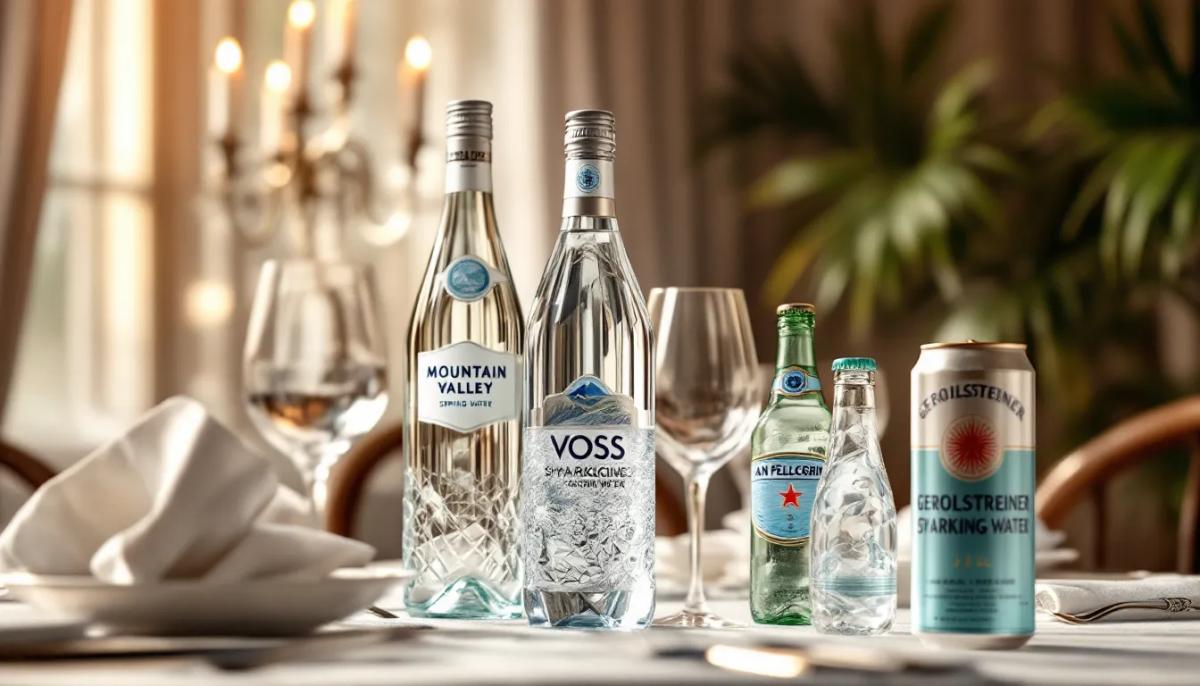
Premium sparkling water brands stand out in the luxury beverage market with distinctive carbonation profiles, mineral compositions, and elegant packaging. These elite options cater to discerning consumers who appreciate the nuanced differences in taste, origin, and presentation.
Naturally Carbonated Springs
Naturally carbonated springs provide unique mineral water varieties that gain their effervescence directly from geological processes. These waters absorb carbon dioxide and minerals as they rise through rock layers, creating distinctive taste profiles impossible to replicate artificially.
Radenska from Slovenia represents one of Europe's most celebrated naturally carbonated waters. Its mineral-rich composition comes from springs that have been sought after since the 16th century, offering a balanced flavor profile with moderate carbonation that appeals to connoisseurs seeking authentic mineral water experiences.
Poland Spring, originating from Maine's natural springs, delivers a crisp taste that reflects its northeastern American terroir. Though not naturally carbonated in all its product lines, the brand's sparkling varieties maintain popularity among American consumers for their clean finish and reliable quality.
Mountain Valley Spring Water from Arkansas stands as America's premium naturally carbonated option. Bottled continuously since 1871, this water filters through granite-based aquifers for up to 3,500 years before emerging naturally carbonated. The brand's iconic green glass bottles preserve both tradition and taste, making it a fixture in upscale dining establishments across the United States.
These naturally carbonated waters differ significantly from their artificially carbonated counterparts in both mouthfeel and mineral integration. The natural carbonation process creates smaller, more stable bubbles that feel smoother on the palate and allow the mineral characteristics to express themselves more harmoniously.
Artisanal Sparkling Waters
Artisanal sparkling water brands focus on craft production, unique flavor profiles, and sustainable practices. These small-batch producers often emphasize connection to specific regions and meticulous attention to quality control.
Vichy Sparkling represents French luxury in the water category. Sourced from thermal springs in the Auvergne region of France, Vichy's water contains 27 different minerals and trace elements. The distinctive sodium bicarbonate content creates a unique taste profile that pairs exceptionally well with fine dining experiences, explaining its presence in Michelin-starred restaurants throughout Europe.
Three Bays, while not traditionally categorized as artisanal, delivers premium Australian sparkling water with a focus on purity. Sourced from protected aquifers in Victoria, Three Bays emphasizes minimal processing to preserve natural minerality. Its balanced profile makes it popular in high-end hotels and restaurants throughout the Asia-Pacific region.
Virginia Artesian offers craft sparkling waters from protected underground sources in the eastern United States. The company's small-batch approach ensures quality control while its commitment to sustainable practices attracts environmentally conscious consumers. Their sparkling varieties feature subtle minerality and gentle carbonation that complement rather than overwhelm food pairings.
Artisanal producers differentiate themselves through unique bottling practices, sustainable initiatives, and local distribution networks. Many limit production intentionally to maintain quality standards and create exclusivity that appeals to luxury water enthusiasts.
Topo Chico leads the premium Mexican sparkling water market with its intense carbonation and mineral-rich profile. Sourced from springs near Monterrey, Mexico since 1895, Topo Chico's distinctive bottle design and powerful bubbles have created a devoted following. Its versatility as both a standalone beverage and a cocktail mixer has expanded its presence in bars and restaurants globally.
Spindrift revolutionized the American flavored sparkling water market by using real fruit juice instead of artificial flavors. Founded in 2010, the brand emphasizes transparency and simplicity with ingredients lists consumers can understand. Their sparkling waters contain 10% fruit juice on average, creating authentic flavor profiles that have disrupted the traditional sparkling water category.
San Pellegrino's Italian heritage dates back to 1899, with water sourced from the foothills of the Italian Alps. Its distinctive minerality comes from a 30-year journey through limestone and volcanic rocks. The brand's recognizable green glass bottles and subtle carbonation make it a fixture in fine dining establishments worldwide, while its flavored varieties expand its appeal to casual consumers.
Voss captures premium Norwegian water in cylindrical glass bottles that have become design icons. Sourced from an artesian aquifer protected from pollution, Voss emphasizes both purity and presentation. Its minimalist aesthetic appeals to design-conscious consumers while its low mineral content provides a clean canvas for cocktails and culinary pairings.
San Benedetto represents Italian craftsmanship with water sourced from an ancient underground basin in the Veneto region. Its moderate mineralization and gentle carbonation showcase the balanced profile characteristic of premium Italian waters. The brand's commitment to environmental sustainability, including reduced plastic usage and carbon neutrality initiatives, appeals to eco-conscious luxury consumers.
Artesian and Glacier Water Brands
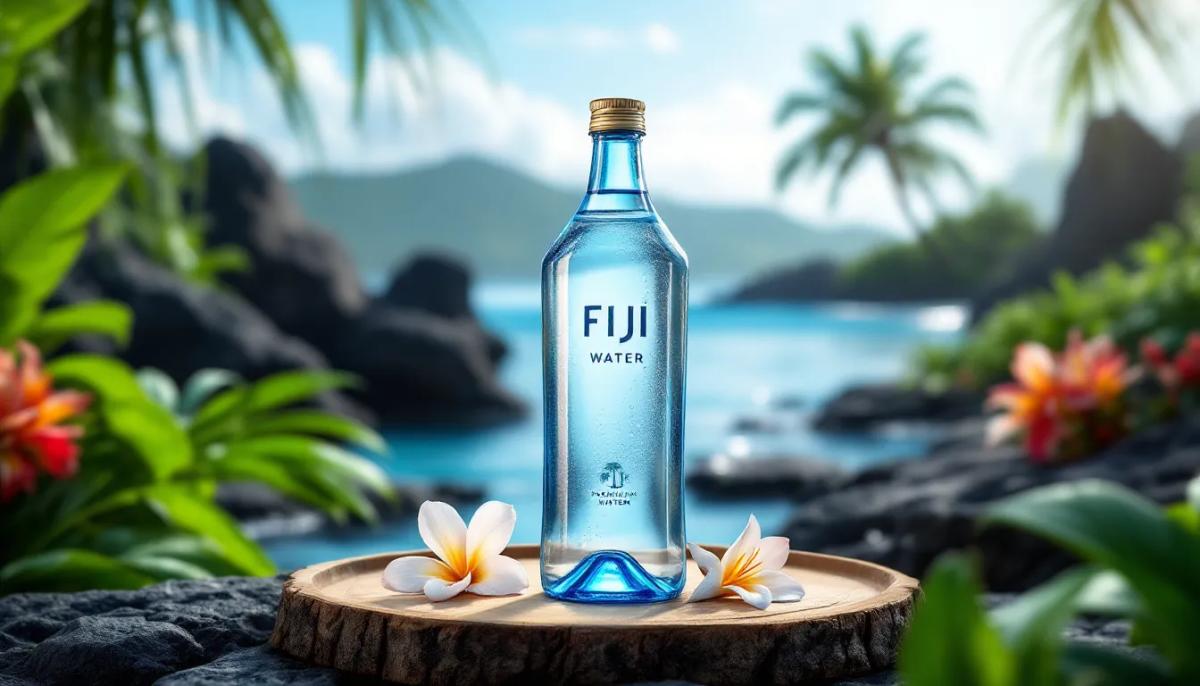
Premium water brands sourced from artesian wells and glacier formations represent the pinnacle of luxury hydration. These waters derive their exceptional qualities from geological formations that naturally filter and enhance the water with unique mineral profiles, creating distinctive tastes and experiences for discerning consumers.
Ancient Aquifer Waters
Ancient aquifer waters emerge from underground reservoirs formed centuries or millennia ago, protected from modern contaminants by layers of rock and sediment. FIJI Water stands as the most recognized ancient aquifer water globally, sourced from an artesian aquifer on the Fijian island of Viti Levu. The water's journey through volcanic rock creates its distinctive smooth taste and natural mineral composition, giving it a unique flavor profile that resonates with luxury consumers worldwide.
RainForest Water from Costa Rica taps into naturally filtered sources that pass through multiple rock layers. This filtration process endows the water with a balanced mineral content that includes essential elements like calcium and magnesium. The brand emphasizes sustainability by using recyclable packaging, appealing to environmentally conscious premium water enthusiasts.
Hallstein Water from Austria represents one of the most exclusive ancient aquifer waters available. Sourced from a proprietary artesian aquifer deep within the Austrian Alps, Hallstein distinguishes itself with exceptionally low sodium content and alkaline properties. The water emerges naturally at 41°F with a pH of 8.2-8.5, requiring no treatment or filtration before bottling. This Austrian premium water sells on a subscription basis only, enhancing its exclusivity in the luxury water market.
Ancient aquifer waters typically showcase stable mineral compositions thanks to their age and natural filtration. The rocks surrounding these aquifers impart trace elements that create signature flavor profiles difficult to replicate through artificial means. Premium water connoisseurs appreciate these waters for their purity, balanced mineralization, and connection to geological history.
Pristine Glacier Sources
Glacier water brands harness the purity of ice formations created over thousands of years from compressed snow. NOW Nature's Own Water exemplifies premium glacier water with its naturally alkaline properties and rich electrolyte content. Sourced from pristine glacier formations, this water contains naturally occurring minerals absorbed during its slow journey from ice to liquid form.
10 Thousand BC represents another exclusive glacier water brand, harvested from icebergs in British Columbia, Canada. These icebergs formed during the last ice age approximately 10,000 years ago, predating modern industrial pollution. The water contains minimal dissolved solids (TDS) with a light, clean taste profile that appeals to luxury water enthusiasts seeking the purest hydration experience.
Svalbarði positions itself as ultra-premium water harvested from Norwegian Arctic icebergs. Each limited edition batch comes from ice that fell from the Svalbard glaciers, capturing water that was frozen before the Industrial Revolution. With only 14mg/L of total dissolved solids, Svalbarði offers minimal mineralization and an exceptionally clean taste profile. The brand produces just 13,000 bottles annually, emphasizing exclusivity and environmental responsibility.
Icelandic Glacial sources its water from the Ölfus Spring, fed by Iceland's Langjökull glacier. The water filters naturally through layers of inert volcanic rock, resulting in an alkaline pH of 8.4 with low mineralization. This Icelandic premium water emphasizes environmental credentials with carbon-neutral operations and packaging that maintains the water's pristine quality.
Glacier waters appeal to luxury consumers seeking hydrological purity. These waters typically feature:
- Low TDS (total dissolved solids) measurements
- Neutral to slightly alkaline pH levels
- Minimal processing requirements
- Connection to ancient ice formations predating modern pollution
- Limited production quantities enhancing exclusivity
The harvesting process for glacier waters involves specialized techniques that preserve purity. For iceberg-sourced waters, companies employ sustainable harvesting methods that capture naturally calved icebergs rather than directly impacting glaciers. This approach addresses environmental concerns while maintaining the water's premium status.
Premium glacier and artesian water brands continue to expand their presence in luxury hospitality settings, exclusive restaurants, and high-end retail. The geological stories behind these waters create compelling narratives that justify premium pricing and foster consumer connection. As awareness of water quality increases, these specialized sources solidify their position at the apex of the premium bottled water market.
Health Benefits of Premium Waters
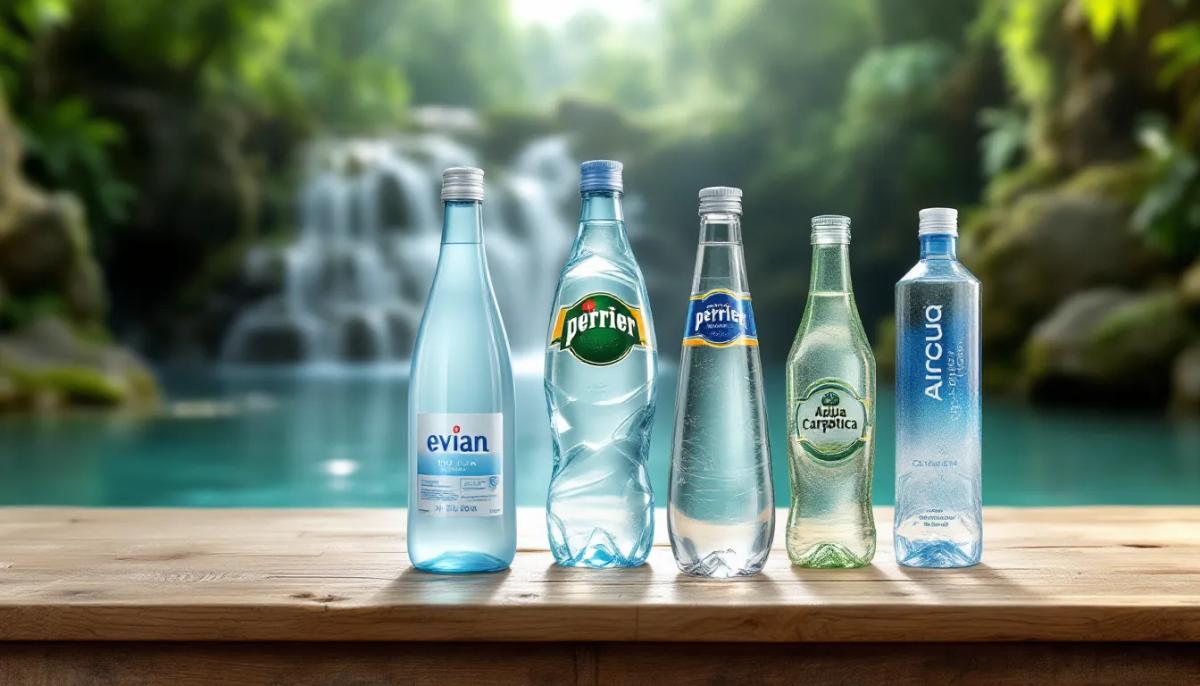
Premium waters deliver more than hydration through their distinct mineral compositions and purity levels. These specialized waters provide essential nutrients and electrolytes that support various bodily functions while offering an enhanced drinking experience compared to regular tap water.
Mineral Content Comparison
Premium water brands distinguish themselves through unique mineral profiles that contribute to health benefits and flavor profiles. The mineral content varies significantly among leading brands:
Evian contains a balanced mineral composition with calcium (80mg/L) and magnesium (26mg/L) sourced from glacial springs in the French Alps. These minerals support bone health and muscle function while providing a smooth taste profile.
Perrier and San Pellegrino feature naturally high mineral concentrations, particularly calcium, magnesium, and bicarbonates. San Pellegrino contains approximately 174mg/L of calcium and 52mg/L of magnesium, making it beneficial for digestive health. The natural carbonation in these waters enhances mineral absorption and aids digestion.
Aqua Carpatica stands out for its exceptionally low nitrate content (0.6mg/L) while maintaining beneficial levels of calcium and magnesium. This Romanian water sources from the pristine Carpathian Mountains, resulting in minimal processing requirements and preservation of natural mineral content.
Mountain Valley spring water from Arkansas provides natural minerals at levels that support bodily functions without overwhelming the palate. The brand emphasizes purity while delivering calcium, potassium, and magnesium that contribute to electrolyte balance.
LIFEWTR takes a different approach by starting with purified water and adding specific minerals like magnesium sulfate and potassium bicarbonate. This controlled mineral enhancement creates consistency in both taste and nutritional benefits across batches.
The calcium in mineral waters supports bone strength and density, particularly important for those at risk of osteoporosis. Magnesium aids in muscle recovery, nerve function, and energy production. Potassium assists with blood pressure regulation and heart rhythm maintenance. These minerals work synergistically when consumed through water, often showing better absorption rates than supplements.
Premium waters with balanced mineral content help maintain electrolyte levels during exercise or illness, supporting proper hydration and cellular function. For athletes and active individuals, mineral-rich waters provide essential replenishment during and after physical exertion.
pH and Alkalinity Factors
The pH level in bottled water affects both taste and potential health influences. Premium water brands position themselves at various points on the pH scale to target different consumer preferences:
LIFEWTR maintains a pH range between 6.4 and 7.4, falling in the neutral to slightly acidic category. The added potassium bicarbonate helps balance the pH while improving taste. This range mimics natural spring waters and provides familiar refreshment without extreme alkalinity or acidity.
Aqua Carpatica markets naturally alkaline water with a pH around 8.0, significantly higher than many competitors. This alkalinity stems from natural geological filtration rather than artificial enhancement. Proponents suggest alkaline waters help neutralize acidic metabolic byproducts and support the body's natural pH balance.
Evian offers a slightly neutral pH of approximately 7.2, typical of natural spring waters. This balanced pH doesn't interfere with the body's digestive processes while delivering hydration and minerals effectively.
Mountain Valley spring water has a naturally alkaline pH of 7.8, achieved through natural rock filtration without artificial processing. The moderate alkalinity complements its mineral profile while remaining gentle on the digestive system.
The health implications of water pH continue to evolve in scientific research. Alkaline waters may provide relief for acid reflux symptoms by neutralizing stomach acid. The higher pH potentially reduces acid load on the kidneys, though research remains ongoing regarding long-term benefits.
Consumers with sensitive digestive systems often report improved comfort when drinking waters with balanced pH levels. The bicarbonate content in sparkling mineral waters like San Pellegrino aids digestion by neutralizing stomach acid after meals, a traditional practice in many European cultures.
Premium waters with stable pH levels maintain their properties longer during storage, ensuring consistent taste and potential health benefits. The interaction between mineral content and pH creates unique taste profiles that distinguish premium brands beyond marketing claims.
For those concerned about acidity in their diet, premium waters with higher alkalinity provide a simple dietary adjustment without drastic changes. The combination of proper pH and balanced minerals supports optimal cellular function and hydration efficiency, making premium waters more than just luxury status symbols.
Sustainable Packaging Innovations
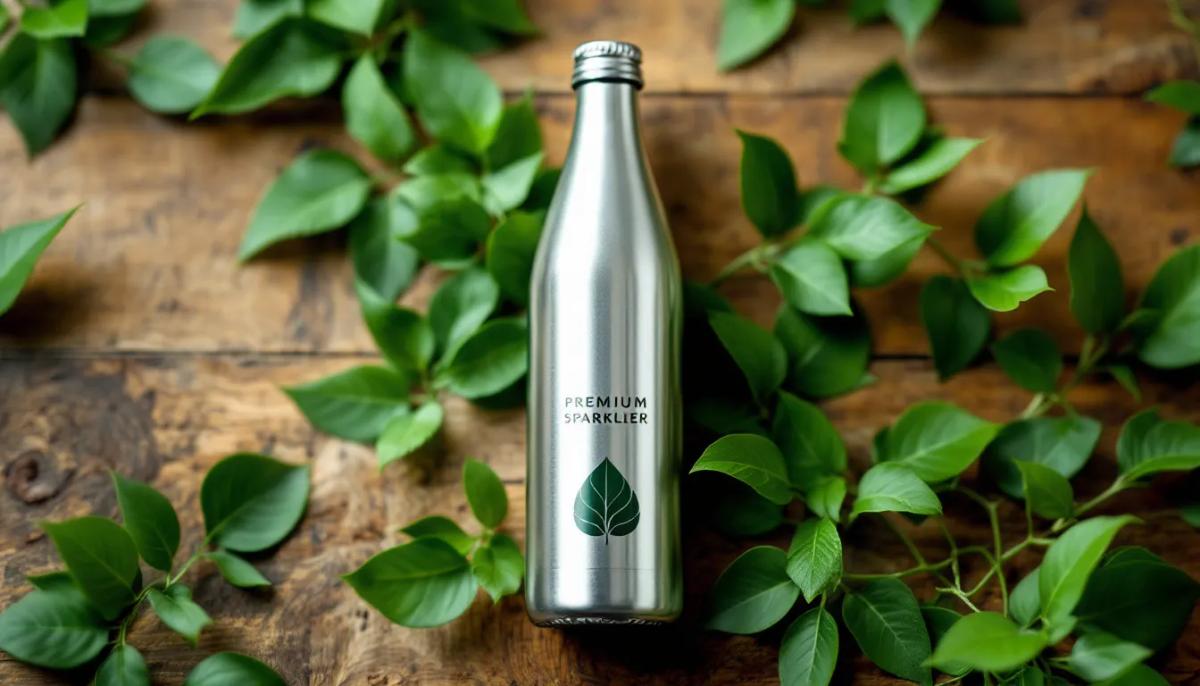
Premium water brands are embracing eco-conscious packaging to minimize environmental impact while maintaining product integrity. These innovations range from recycled materials to completely redesigned container systems that reduce waste and carbon emissions.
Eco-Friendly Bottle Designs
Several leading water brands have revolutionized their packaging with sustainable materials that preserve both product quality and the environment. Perfect Hydration Alkaline Water exemplifies this commitment with its complete packaging overhaul, now using bottles made from 100% post-consumer recycled, BPA-free rPET-1 plastic. These bottles maintain the premium look customers expect while being fully recyclable in most municipal systems.
Aluminum containers have emerged as another sustainable option among luxury water brands. Flow Beverage packages its premium sparkling mineral spring waters in sleek 300ml aluminum bottles that combine aesthetic appeal with environmental responsibility. These containers use 70% recycled aluminum—requiring 30% less material than competing formats while maintaining structural integrity and product freshness.
Chlorophyll Water has developed innovative packaging solutions that support both environmental goals and product protection. Their design philosophy focuses on reducing plastic usage while ensuring the distinctive properties of their mineral-enhanced water remain uncompromised during storage and transportation.
The shift toward sustainable packaging extends beyond materials to include structural design elements that minimize resource usage. Innovations like thinner bottle walls, strategically reinforced stress points, and lightweight caps reduce the overall materials needed without sacrificing durability—a critical factor for premium water brands where presentation directly influences consumer perception.
Carbon Footprint Considerations
Premium water brands are addressing carbon emissions throughout their product lifecycle through strategic packaging choices. Flow Beverage's aluminum bottles demonstrate this approach by requiring 60% less energy to produce compared to conventional containers. This energy reduction translates to significantly lower carbon emissions during the manufacturing process.
The use of recycled materials in packaging substantially reduces carbon impact. When brands like Perfect Hydration utilize 100% post-consumer recycled plastic, they eliminate the carbon costs associated with virgin plastic production—including petroleum extraction, processing, and transportation emissions. This closed-loop approach keeps existing materials in circulation rather than creating demand for new resources.
Transportation efficiency also factors into packaging sustainability. Lightweight materials and space-efficient designs reduce fuel consumption during distribution. Some premium water brands have redesigned their packaging specifically to optimize shipping density, fitting more product into each delivery vehicle and thereby reducing the carbon emissions per unit sold.
Long-term recyclability creates additional carbon benefits beyond the initial production phase. Aluminum bottles, increasingly adopted by luxury water brands, can be recycled indefinitely without quality degradation. Each recycling cycle preserves approximately 95% of the energy that would be required to produce new aluminum, creating a compounding environmental benefit over time.
These packaging innovations demonstrate how premium water brands are responding to environmental concerns while maintaining their luxury positioning. By integrating sustainability into their packaging strategies, these companies satisfy eco-conscious consumers while setting new standards for the industry.
Premium Water Tasting Guide
Premium water tasting reveals subtle differences in taste, texture, and mineral profiles that distinguish luxury water brands. Learning to discern these qualities transforms ordinary hydration into a sophisticated sensory experience comparable to wine tasting.
How to Develop Your Water Palate
Developing a refined water palate requires attention to detail and practice with different premium waters. The source of water dramatically influences its flavor profile, with spring waters offering more distinctive taste characteristics than purified varieties. Mountain Valley spring water from Arkansas delivers a crisp, clean taste with a specific mineral composition that creates a memorable flavor signature.
Temperature significantly impacts taste perception when sampling premium waters. Some varieties reveal their full flavor profile at room temperature, while others shine when chilled. Experiment by tasting the same water at different temperatures to identify optimal serving conditions for each brand.
Pay close attention to the mineral content when tasting premium waters. Brands like Aqua Carpatica from the Carpathian Mountains contain a mineral-rich composition that creates a distinctive mouthfeel and aftertaste. The presence of calcium, magnesium, and potassium contributes unique flavor notes that water connoisseurs learn to identify.
Start your tasting journey with a clean palate by avoiding strong foods or drinks before sampling. Cleanse your palate between tastings with plain crackers or small sips of room temperature neutral water. Record your observations about each water's clarity, aroma, texture, taste, and finish to track your developing preferences.
Practice comparative tastings by sampling multiple premium waters side by side. Line up bottles of contrasting brands like LIFEWTR with its pH-balanced formula and added minerals against Evian's natural mineral profile. Note the differences in smoothness, crispness, and mineral presence between each variety.
Consider the TDS (Total Dissolved Solids) levels in each water, as higher TDS typically creates a more pronounced mineral taste while lower TDS produces a lighter, cleaner flavor. Premium waters span the spectrum from mineral-rich to ultra-pure, each offering a different sensory experience.
Train your palate to detect subtle quality indicators such as:
- Initial impression: How the water feels when it first touches your tongue
- Mouthfeel: The texture and weight of the water as you hold it in your mouth
- Flavor notes: Subtle hints of sweetness, salinity, or minerality
- Finish: The lingering sensation after swallowing
Use a systematic approach similar to wine tasting by examining the water's appearance, swirling it gently in the glass, noting any aromas, and then tasting for the full flavor profile. Premium waters display surprising complexity when approached with this level of attention.
Pairing Waters with Fine Dining
Premium water pairing elevates dining experiences by complementing and enhancing food flavors. Light dishes with delicate flavors pair exceptionally well with crisp, refreshing waters like Mountain Valley, which won't overwhelm subtle taste profiles. For seafood courses, waters with minimal minerality preserve the ocean-fresh qualities of the dish.
The mineral profile of water creates meaningful interactions with food flavors. Waters high in mineral content, particularly those with pronounced calcium or magnesium, complement rich, fatty dishes by providing contrast and cleansing the palate between bites. Conversely, low-mineral waters pair beautifully with subtle flavors in delicate cuisine.
Temperature selection creates strategic pairing opportunities. Chilled waters (42-50°F) brighten acidic flavors in salads and appetizers, while room temperature waters (55-65°F) better showcase their own mineral qualities and complement main courses without shocking the palate with cold.
Premium restaurants increasingly feature water sommeliers who guide diners through thoughtful water pairings. These specialists consider the regional origin of both the water and cuisine to create harmonious geographic pairings. Italian mineral waters naturally complement Italian dishes, while waters from volcanic regions pair wonderfully with grilled meats.
Carbonation levels introduce another dimension to food pairing. Still waters provide neutral accompaniment to complex dishes, while lightly carbonated options cleanse the palate between rich courses. Highly carbonated waters cut through fatty dishes with their effervescence and stimulate the palate for the next bite.
Consider these specific pairing suggestions:
- Delicate seafood: Pair with low-minerality still waters like Aqua Carpatica to preserve subtle ocean flavors
- Aged cheeses: Match with sparkling mineral waters to cut through richness
- Spicy cuisine: Complement with neutral pH waters like LIFEWTR to balance heat
- Chocolate desserts: Enhance with slightly alkaline waters that highlight cocoa notes
- Red meat: Pair with robust mineral waters that stand up to strong flavors
The serving vessel significantly impacts the water tasting experience. Premium restaurants present waters in specialized glassware that highlights their qualities - wider bowls for waters with complex mineral profiles and tall, narrow glasses for sparkling varieties to preserve carbonation.
Water service timing matters in multi-course meals. A thoughtful progression might begin with lighter, more refreshing waters for appetizers, followed by mineral-rich varieties for main courses, and conclude with pure, cleansing waters alongside dessert. This approach treats water as an integral part of the dining journey rather than an afterthought.
For special occasions, consider vintage-dated waters from exclusive sources. Just as wine vintages capture specific seasonal characteristics, certain premium water brands offer limited releases that reflect the unique environmental conditions of particular harvesting periods. These rare waters provide extraordinary pairing opportunities for celebratory meals.
When hosting water tastings at home, present each premium water with information about its source, mineral content, and optimal food pairings. Provide tasting notes cards for guests to record their impressions and preferences, transforming hydration into an interactive culinary experience that rivals wine tasting in sophistication and enjoyment.
Conclusion
Premium water brands have transformed ordinary hydration into extraordinary experiences through meticulous sourcing pristine aquifers glaciers and artesian wells. These luxury waters offer more than status they deliver unique mineral profiles health benefits and distinctive taste experiences that justify their premium positioning.
The industry continues to evolve with sustainable packaging innovations and growing consumer sophistication about water quality. As water sommeliers become fixtures in fine dining establishments and home tastings gain popularity water appreciation has reached new heights.
The global premium water market represents the perfect fusion of nature science and luxury branding demonstrating how even the most fundamental element can be elevated to an art form worth savoring.
Frequently Asked Questions
What makes water "premium" compared to regular bottled water?
Premium water is distinguished by its source (often remote or protected locations), extensive purification processes, unique mineral composition, and pH levels. Unlike regular bottled water, premium brands emphasize sophisticated filtration techniques, geographic origin stories (like artesian aquifers or ancient glaciers), and elegant packaging. The distinctive mineral profiles create subtle taste differences that justify luxury pricing and appeal to discerning consumers.
Which minerals in premium water provide health benefits?
Premium waters contain essential minerals like calcium (supports bone health), magnesium (aids muscle function), potassium (maintains fluid balance), and silica (promotes collagen production). These naturally occurring minerals support bodily functions while enhancing flavor profiles. Different brands feature varying mineral compositions—Evian offers balanced minerals, while Aqua Carpatica promotes its low nitrate content. These minerals provide electrolytes that regular tap water may lack.
Are alkaline premium waters better for health?
Alkaline premium waters (pH above 7) may offer potential benefits including improved hydration, digestion support, and neutralization of acid in the body. Brands like Essentia market higher alkalinity as a health advantage. However, scientific evidence supporting superior health benefits remains limited. The primary advantage of alkaline waters is their smooth taste profile, which many consumers find more pleasant and refreshing compared to neutral or acidic waters.
How do premium still waters differ from premium sparkling waters?
Premium still waters focus on purity, mineral composition, and source stories, while premium sparkling waters add carbonation complexity to these qualities. Naturally carbonated springs like Radenska offer unique mineral-infused bubbles formed by geological processes. Artisanal sparkling waters emphasize craft production techniques, while brands like Topo Chico feature distinctive carbonation intensities. Still waters highlight subtlety and purity, while sparkling waters add textural dimensions through effervescence.
What sustainable packaging innovations are premium water brands implementing?
Premium water brands are adopting eco-friendly packaging solutions including 100% post-consumer recycled plastic (Perfect Hydration), aluminum containers (Flow Beverage), and plant-based materials. Many brands have reduced plastic content in their bottles, implemented carbon-neutral shipping, and designed space-efficient packaging to minimize transportation emissions. These sustainable innovations help brands align with environmental values while maintaining product integrity and appealing to eco-conscious luxury consumers.
How can I develop a refined water palate for tasting premium waters?
Develop a water palate by tasting different brands side-by-side at room temperature to detect subtle differences. Focus on mouthfeel (silky, velvety, crisp), minerality (metallic, earthy, sweet), and finish (clean, lingering). Use wine-tasting techniques: examine appearance, smell for subtle aromas, taste small amounts, and note the aftertaste. Consider recording impressions in a journal and learning about mineral content and sources to understand why each water tastes distinct.
Can premium waters be paired with food like wine?
Yes, premium waters can be expertly paired with foods to enhance dining experiences. Light, low-minerality waters complement delicate dishes without overwhelming flavors. Medium-mineral waters pair well with main courses, while high-mineral waters stand up to rich, flavorful foods. Water sommeliers in luxury restaurants guide these pairings based on mineral content, carbonation levels, and temperature. Strategic pairing can cleanse the palate between courses and highlight specific flavor notes in both food and water.
Where do the most exclusive premium waters come from?
The most exclusive premium waters originate from protected ancient aquifers, pristine glaciers, and artesian wells. FIJI Water comes from a remote artesian aquifer in the Fiji Islands. Svalbarði harvests from Norwegian Arctic icebergs. 10 Thousand BC sources from Canadian glacial ice formed during the last Ice Age. Hallstein Water comes from a deep Austrian aquifer. These remote, often difficult-to-access sources ensure purity, unique mineral compositions, and compelling origin stories that justify premium pricing.
How are premium glacial waters harvested sustainably?
Premium glacial water brands implement sustainable harvesting by collecting only naturally calving icebergs (Svalbarði), establishing strict annual collection limits, using renewable energy in bottling facilities, and employing carbon offset programs. Brands like Icelandic Glacial maintain carbon-neutral operations throughout their supply chain. Harvest timing is carefully planned to minimize environmental impact, and many companies financially support glacier research and conservation efforts to balance their commercial activities with environmental stewardship.
What's the difference between artesian well water and regular spring water?
Artesian well water comes from confined aquifers where underground pressure forces water to rise naturally to the surface, requiring minimal pumping and processing. This natural pressure helps protect the water from surface contaminants. Regular spring water emerges naturally at ground level but lacks the protective pressure system. Artesian sources typically provide more consistent mineral profiles and higher purity levels, making them prized among premium water brands for their natural filtration through geological formations.
Valencia Jackson is a content strategist at AMW.
